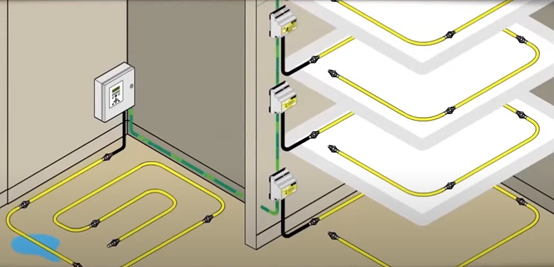Gas analyzers play a crucial role in various industries by helping monitor and analyze gas components to ensure safety, efficiency, and compliance with standards. Proper use of a gas analyzer enhances measurement accuracy and safeguards operator safety. Here is a detailed guide on using a gas analyzer.
1. Importance of Gas Analyzers

Gas analyzers are essential tools for measuring gas concentrations and components, ensuring safety and efficiency in industrial processes. They are widely used in the following fields:
Energy Industry: Monitoring gas emissions from combustion processes to ensure environmental compliance and efficiency.
Chemical Plants: Analyzing reaction gases to optimize production processes and ensure product quality.
Environmental Monitoring: Measuring air quality, detecting pollutants, and ensuring public health.
Pharmaceutical and Food Processing: Ensuring that gas compositions in production environments meet safety standards.
Laboratory Research: Providing accurate gas analysis data for scientific research and development.
2. Choosing the Right Gas Analyzer

Select the Analyzer Type Based on Target Gas
Different gas analyzers are designed for different gases. Choose an analyzer based on the type of gas you need to measure, such as oxygen, carbon monoxide, carbon dioxide, nitrogen oxides, etc. Common types include:
Infrared (IR) Gas Analyzers: Suitable for measuring CO₂, CO, and others.
Electrochemical Gas Analyzers: Suitable for detecting toxic gases such as NOx, SO₂, and H₂S.
Mass Spectrometry Analyzers: Used for high-precision residual gas analysis.
Determine Accuracy and Range Requirements
When selecting a gas analyzer, consider its accuracy and range to meet specific application needs. For environmental monitoring, a device with high sensitivity and a wide range may be required, while industrial applications might prioritize durability and stability. Ensure that the instrument’s technical specifications match the measurement requirements.
3. Analysis and Measurement

Start the Analyzer
Ensure the analyzer is properly powered and perform a startup self-check. Verify the instrument’s status and settings to ensure it is ready for measurement.
Select the Correct Analysis Mode
Choose the appropriate analysis mode based on your needs, such as real-time measurement or average value calculation. Real-time measurement is suitable for dynamic monitoring, while average value calculation helps obtain stable data.
Record Data
During the analysis, promptly record the real-time data displayed on the analyzer. Ensure all critical measurement results, including gas concentrations and other relevant parameters, are documented.
Monitor Real-Time Data
Continuously monitor the data displayed on the analyzer to observe changes in gas concentrations and ensure the accuracy and reliability of the data.
Analyze Data
Generate reports based on the measurement data and analyze the results to assess whether gas concentrations meet expected standards or regulations. Data analysis helps evaluate process control effectiveness and environmental safety.
4. Safety Considerations
Avoid Gas Leaks
Ensure the analyzer and its connections are properly sealed to prevent gas leaks during analysis. Leaks may lead to inaccurate measurements or hazardous conditions.
Handle and Operate with Care to Prevent Leaks
Be cautious with gas handling, especially when dealing with high concentrations or toxic gases. Regularly check the equipment connections and address any potential leaks promptly.
Wear Personal Protective Equipment
Wear appropriate personal protective equipment (such as safety goggles, gloves, respirators, etc.) based on the type and concentration of gas. This is crucial for protecting operators from harmful gas exposure.
By following these steps, you can ensure the effective use of a gas analyzer and accurate data, while safeguarding operator safety. Proper operation enhances the precision of gas analysis and plays a vital role in industrial and environmental monitoring.






